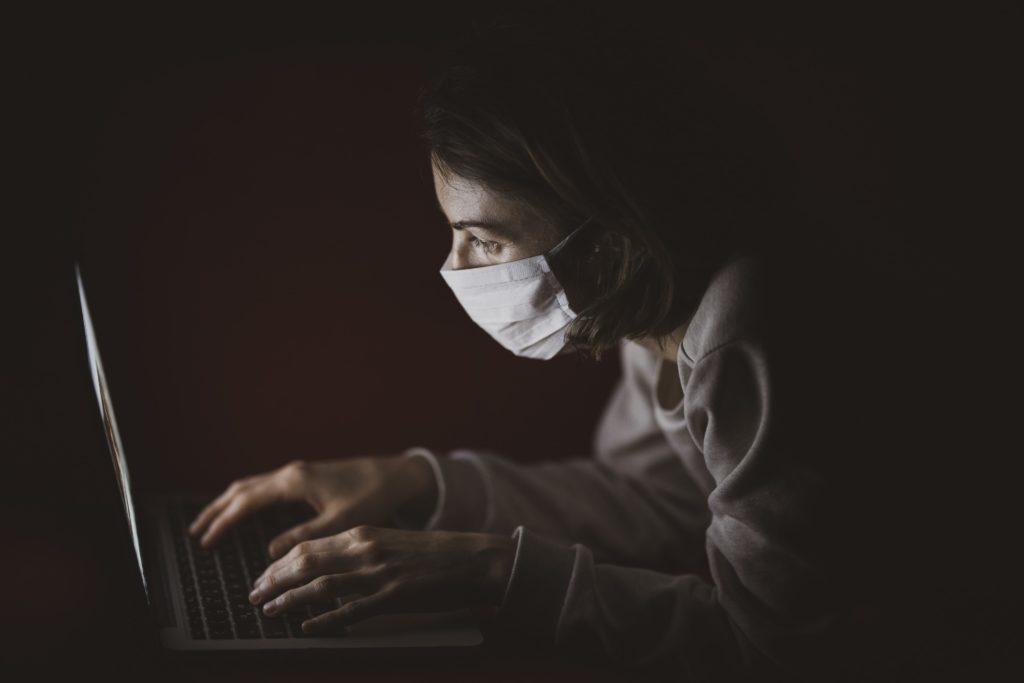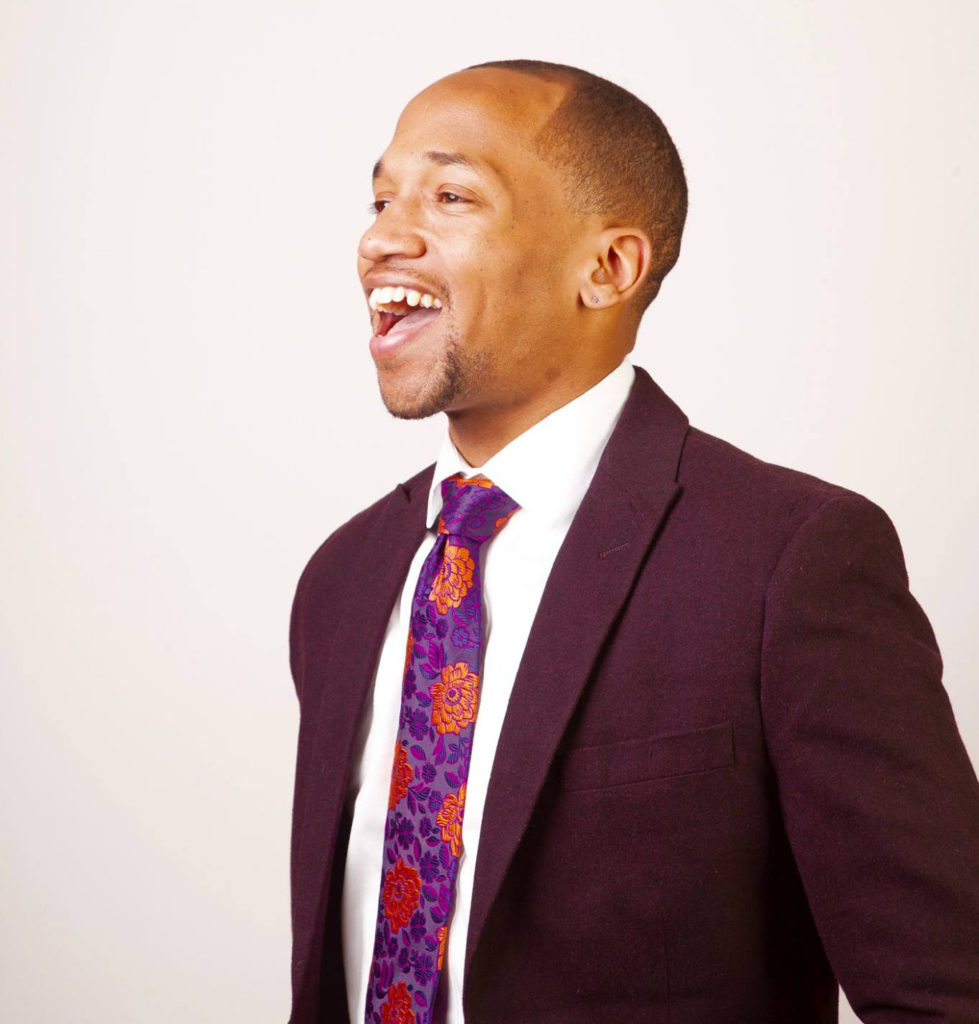Health Communication in the Chaos of COVID-19
EXPERT INSIGHTS ON THE COVID-19 CRISIS: PART 2

By Molly Loughman
This article is the second in a series, drawing expert insights from the Emerson community as humankind navigates the evolving challenges of the COVID-19 crisis.

As the COVID-19 pandemic threatens the well-being and livelihood of millions around the world, clear and effective health communication is more crucial than ever. Meanwhile, social anxiety and confusion seems to be growing amid inconsistent and contradicting messages from government officials and the media, says Deion Hawkins, a health communication scholar and assistant professor of Communication Studies.
“With the public, I definitely think we’re all anxious. For me, I may be more confused than anxious, Everyday I wake up and it feels like I’m in a movie… There’s three people in the grocery store.” wonders Hawkins, who admits that even with a PhD in health communication, he struggles to navigate all the mixed messages surrounding COVID-19.
“In terms of the narrative, I think [the federal government] is ignorantly optimistic. And I know that sounds harsh, but I think a lot of their numbers they’ve indicated are predicated on perfect procedure, on perfect social distancing, and we’ve just not seen that happen.

“While the federal government scrambles for an effective emergency response to the rapid spread of COVID-19, certain state and local governments are meeting the crisis with transparent, trustworthy, and clear health communication and policy, notes Hawkins.
“One thing that’s really important in health communication is ‘locus of control,’ which is the idea that, ‘I have the ability to overcome this situation,’ or ‘self-efficacy’ — ‘I can do something to prevent this from happening to me.’ So those are two huge things in health communication. And what’s dangerous is if you get a large amount of people to the point of low self-efficacy, because then it’s fatalistic,” explains Hawkins.
Hawkins, a health communication scholar and an avid social justice advocate for marginalized communities, has consulted social marketing campaigns combatting issues such as human trafficking, advanced care directives, youth homelessness and pre-exposure prophylaxis (or PrEP) awareness.
What do you believe should have been the appropriate response from the federal government?
To not turn things too political. One, I think the president should have established leadership way earlier on and with the right message construction. People respond to gain-framing messages or positive-frame messages. So to tell people, ‘You can’t go outside. You can’t do this.’ —that usually backfires. I think many people would be a lot less anxious if we had more information earlier on to understand. Instead, we were told that this isn’t a big deal, and now it’s a big deal that’s out of control. We have to be told the rationale for why these actions are being taken. So that goes back to transparency.
When you wake up and see cases have jumped 3,000 again, and 100 more people are dead, that is a very discouraging and disheartening message for the public to receive, so I also think every day there needs to be the constant reinforcement of, ‘Don’t be alarmed, we have more tests, that is why the number is increasing, but the number increasing doesn’t mean that there’s necessarily more cases, it just means we’re now more aware.’
Can you point to an example of someone delivering effective health communication?
The way that New York Governor [Andrew] Cuomo has handled this is going to be studied for decades because he has been completely transparent, honest, and direct — I mean to the point where he called out people playing basketball. He’s been so calm, he’s been so direct, and again, he’s been transparent, both for good and for bad. So, do I agree with everything he has said and the way he has phrased it? No. But I also am not the governor of one of the most populated states in the country, so I can only imagine the frustration. It may seem unthinkable to tell a city like New York to stay indoors, but Cuomo did it unapologetically and he has been steadfast in his reasoning.
New York state has emerged as a major epicenter of the coronavirus outbreak in the U.S. as the state which has reported the highest number of COVID-19 deaths and cases.
How do you see the roles of state and federal governments in terms of this crisis and health communication?
If the federal government can’t help, they can at least stay out of the way, in terms of not doing more harm than good. If the federal government is not going to be bold enough to take the steps to say, ‘This needs to be done at the national level,’ then at the very least, they should not be putting out messaging that directly contradicts what states want to do.
On the other hand, in Florida, Governor Ron DeSantis decided not to shut [down] the tourism industry during spring break season. To me, that is a perfect example of a federal government needing to step in. Many people believe that the states should have the ability to do what they want and limit government intrusion. There is a time and place to hold political ideology, and I don’t think this is one.

What are your thoughts on the other health concerns surrounding the COVID-19 crisis, such as mental health ?
I don’t think we’ll be able to gauge the mental health aspect of this until it’s over. There will be increased rates of depression — not even just from people being stressed out about jobs and bills, but also literal isolation. We need to be on the lookout for more coronavirus cases, but also for mental health issues. We should especially look at how friends’ and family members’ behaviors may change.
To be honest, the mental health conversation that I’ve seen has come from President Trump. He mentioned we should be on the lookout for elevated rates of depression and suicide. I’m sure those conversations are happening behind closed doors, but I think officials fear saying that out loud in public, at a speech or an event, because that could really ring a lot of alarm bells for people. I think they’re really trying to tread the line — which is a delicate line, and I will give anyone credit for this, I do not envy this job — of striking hope and optimism, but still being realistic. And I think the doctors on the task force, Dr. Deborah Birx and Dr. Anthony Fauci, have done an incredible job in being realistic and optimistic.
What is your advice to colleagues and students as they navigate the rest of the semester amid the current crisis?
I think as students and as instructors, we have to be realistic about what an online transition looks like. As professors, we have to change some assignments. We may not get to every lecture. We may not honestly get to everything we wanted to touch on in the class. It’s frustrating, yes, but we’ve got to come to the point that we have to recognize that that is OK. We are in triage mode right now, and there is a literal global pandemic happening, and that inevitably going to change and alter some things, and we have to be OK with that.
On the student side, students have to recognize that professors are going through this transition the same as you. We are also stressed, we are also anxious. A lot of my colleagues have kids, so they’re at home caring for children, they could have parents falling ill. A lot of us are dealing with a lot of stress, a lot of unease, a lot of anxiousness. And I think there needs to be an amount of patience and grace that is extended across the board for all of us because this is truly uncharted territory.
Categories